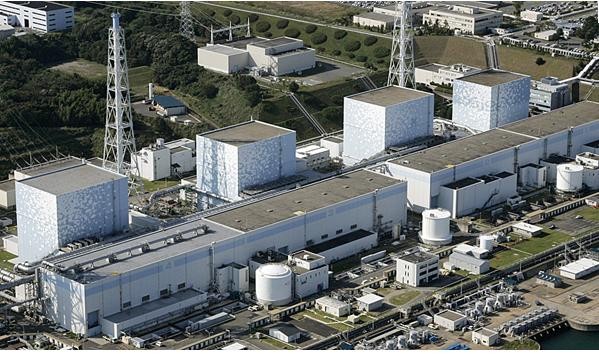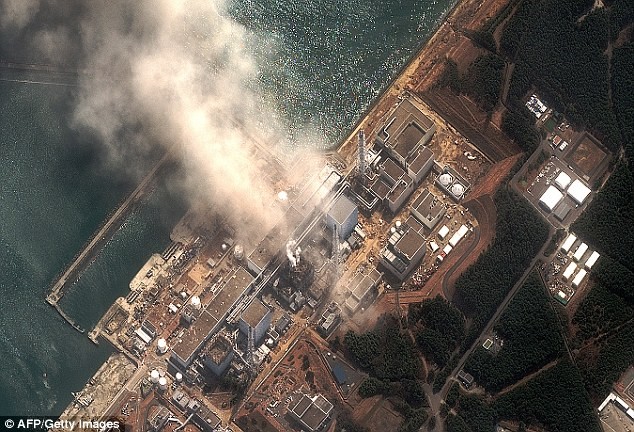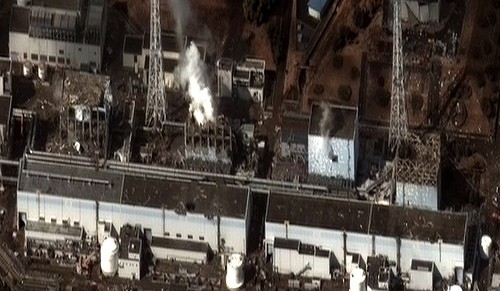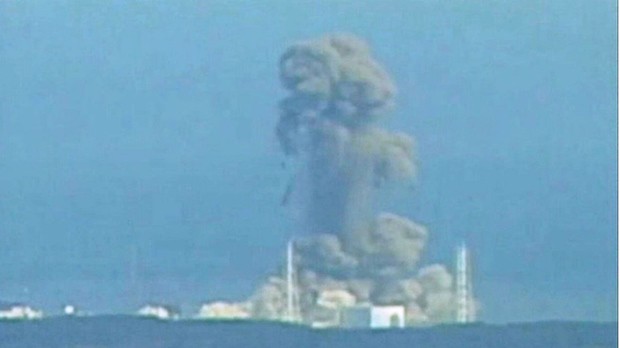Evacuation dilemma - March 17, 2011
Whether to stay or go, that is the question being asked by millions of people across the greater Tokyo area, as well as those in the more sparsely populated 250 miles between Tokyo and the Fukushima nuclear reactor complex. The question carries a weighty angst—do you leave behind a job, parents, spouse, school, or a research career, to get out of harm’s way and avoid the shower of dangerous radiation that might, or might not, come?
And who do you turn to for advice and accurate information?
Foreign countries are giving various advisories, all more extensive than those given by Japan. France, in a strongly worded foreign ministry post that promised the mobilization of Air France airplanes in the region to meet the demand, advised citizens to leave Tokyo. Finland recommended the same for families with small children. On 15 March, China sent a notice that it would evacuate citizens from the areas closer to the reactors — the first official foreign evacuation. That did not cover Tokyo area but it will no doubt affect the decisions of Chinese in the capital. Austria decided to move its embassy to Osaka. In an about face, at the end of the day yesterday, the UK embassy advised its citizens to leave the Tokyo area, though it did so not because of the radiation threat (“there is no real human health issues that people should be concerned about”) but because of “the evolving situation at the Fukushima nuclear facility and potential disruptions to the supply of goods, transport, communications, power and other infrastructure.”
While the United States has not issued such an advisory about the Tokyo area, like the UK, Sweden and other countries, it is recommending that it citizens stay 80 kilometres from the Fukushima reactors—far beyond the 30 kilometre zone set by the Japanese government. The US recommendation, issued on 16 March and based in guidance from the US Nuclear Regulation Commission (NRC), attempts to protect citizens from doses that “could exceed 1 rem [10 milliSievert] to the body or 5 rem to the thyroid. The average American is exposed to approximately 620 millirems, or 0.62 rem, of radiation each year from natural and manmade sources.” (Among other troubling findings of the NRC investigation into the Fukushima plant, there was little if any water in the Number 4 reactor, meaning that the spent fuel rods there would be heating up and spitting out more radiation. TEPCO officials have denied this.)
What does this mean for people living in the Tokyo area? Or for scientists running a lab there?
Everyone is trying to weigh information, interpretations, and rumors — for example, that France’s quick decision to issue an evacuation notice was a strategic move in the nuclear industry competition between the two top users of nuclear energy. Unfortunately there is not much consistent information to go on. The government should be providing evidence in the form of radiation distribution maps (which they have) and clear definitions and interpretation of risk (which they don’t). It would also help to see a comprehensive plan of what the government is up against in trying to head off a “worst case scenario” and what in fact that worst case scenario would mean.
My colleague Geoff Brumfiel wondered if the paucity of information is a problem of getting information translated. It’s not. There is just not much information on the TEPCO and Nuclear Industrial Safety Agency’s websites that help one understand risk.
In the atmosphere of uncertainty, foreigners are leaving in droves. Most of the foreigners I know in Tokyo have left, either for other parts of Japan or foreign countries. Many foreign companies are issuing evacuation orders, and some, including Nature, are setting up temporary offices in other parts of Japan. Many of those who leave do so with mixed feeling. Mark Sherwood, a postdoc at RIKEN’s Brain Science Institute, shares his thoughts upon evacuating below (see letter at end of blog).
Most Japanese, on the other hand, even when offered room, board, and travel expenses to go elsewhere, choose to stay in Tokyo. Some don’t believe there’s much danger, others just can’t imagine abandoning family, and some don’t get time off from work.
This has been frustrating for scientists trying to keep their labs together. One I spoke with watched a postdoc flee at the first mention of the earthquake’s hitting a nuclear plant. Many have just been forced to shut down labs even if they would have been happy to stay. Labs using biological samples will be especially challenged to get through this and, assuming things settle down on the radiation front, get back to lab work.
For scientists who are forced to close their labs or who do chose to evacuate, there might be hope. Researchers living outside of Japan are trying to think of ways to help scientist-refugees (something I’ll write in a separate blog).
(From Mark Sherwood)
I am a foreign postdoctoral researcher at RIKEN Brain Science Institute, based in Wako (Saitama, Japan) on the outskirts of Tokyo. It is 11:20am (Japanese Time) on Monday the 14th, I have just boarded ANA flight 201 for London Heathrow. Our departure is delayed as we wait for a train that has been held up by more aftershocks. There is a somber climate in the cabin, the lady to my left is tearful and the flight attendant, though quietly composed is welling up as we ascend. It is clear that many people are leaving loved ones and friends behind. They fear for those they leave, for their safety, and their future.
The RIKEN wako campus, has so far been spared from damage, however all around me have been affected. Colleagues and friends are still anxious for news from friends and family, fearing the worst for those afflicted by the barrage of tsunamis. To add to this the ground grumbles and violently shakes repeatedly throughout the day and night. All this leaves you nauseous with motion sickness, sleep deprived and without appetite. There is a growing unspoken fear of another large quake. On top of this we are worried about the continuing developments at the nuclear power plant 250km to the north. And yet, I am struck by the remarkable resilience of the Japanese people, getting on with day to day life with a tranquility that is so often used to define Japan. The children baseball leagues continue, the adults go about their chores and jobs as normal. Even the stocking of food supplies is done calmly, noticed only by the empty supermarket shelves.
My decision to take a vacation at this time must in part be influenced by a fear for the worst, of being let down by my poor language skills, and also by the worry expressed by friends, family, colleagues and collaborators (in the UK and around the World). While moving through Narita Airport I bump into several researches all leaving with similar concerns. But importantly, many of us have Japanese/foreign friends, colleagues and some families who remain in Japan. To finish I would like to share a departing text from a young Japanese PhD student in my host laboratory “ask for support from people when you get back please people are dying up there. I know we already getting a lot of support now but when this is over we need money to rebuild peoples house etc”.
Best wishes
Mark
















